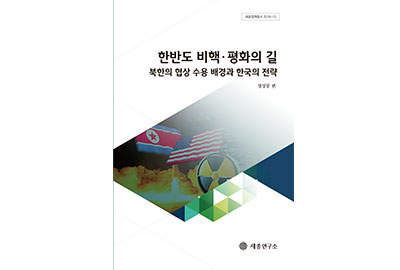This book analyzes the environment surrounding North Korea’s acceptance of denuclearization and North Korea’s nuclear capabilities and presents the directions for denuclearization process, the establishment of a peace regime, and arms control on the Korean Peninsula. Several points may be attributable to Chairman Kim Jong-un’s sudden acceptance to the negotiations on denuclearization and pursuit to improve relations with South Korea and the international community: confidence in the advancement of nuclear and missile capabilities; intensified isolation due to the international community’s extra-harsh sanctions; President Moon’s passionate determination for inter-Korean dialogue; President Trump’s resolve to talk directly with Chairman Kim; China’s cooperation, etc.
At the Panmunjom inter-Korean
summit, President Moon Jae-in and Chairman Kim Jong-un shied away from the
international legal and bureaucratic approach and opted for a political and
transactional approach for denuclearization and the settlement of peace. The
Trump administration also abandoned the normative approach of nuclear
non-proliferation in Singapore and has pursued a political approach. South
Korea and the U.S. should primarily urge North Korea to halt production of
nuclear materials and warheads and discard medium-to-long range missiles. In
return, they need to provide diplomatic and economic compensation as
corresponding measures and ease sanctions.
At the current stage, it is rather
important to have an optimistic and positive mindset as such mindset engenders
a firm resolve to push North Korea to renounce its nuclear ambition. And the
South Korean government should provide a guarantee of North Korea’s safety
specifically leading an international consortium as well as actively being
engaged in the discussion to establish a peace regime on the Korean Peninsula.
On the arms control of conventional
weapons on the Korean Peninsula, it should set the objectives of arms control
and the action principles to achieve these objectives. The two Koreas should
open their military capabilities that go beyond the details in the defense
white paper, carry out student exchanges in different military academies, conduct
mutual visits of warships and aircraft of each other, and mutual observation of
large-scale military exercises, etc. all as confidence-building measures
between the two sides.
Volume:
2018-10
Publication
Date: December 10, 2018
183 Pages, Paperback
